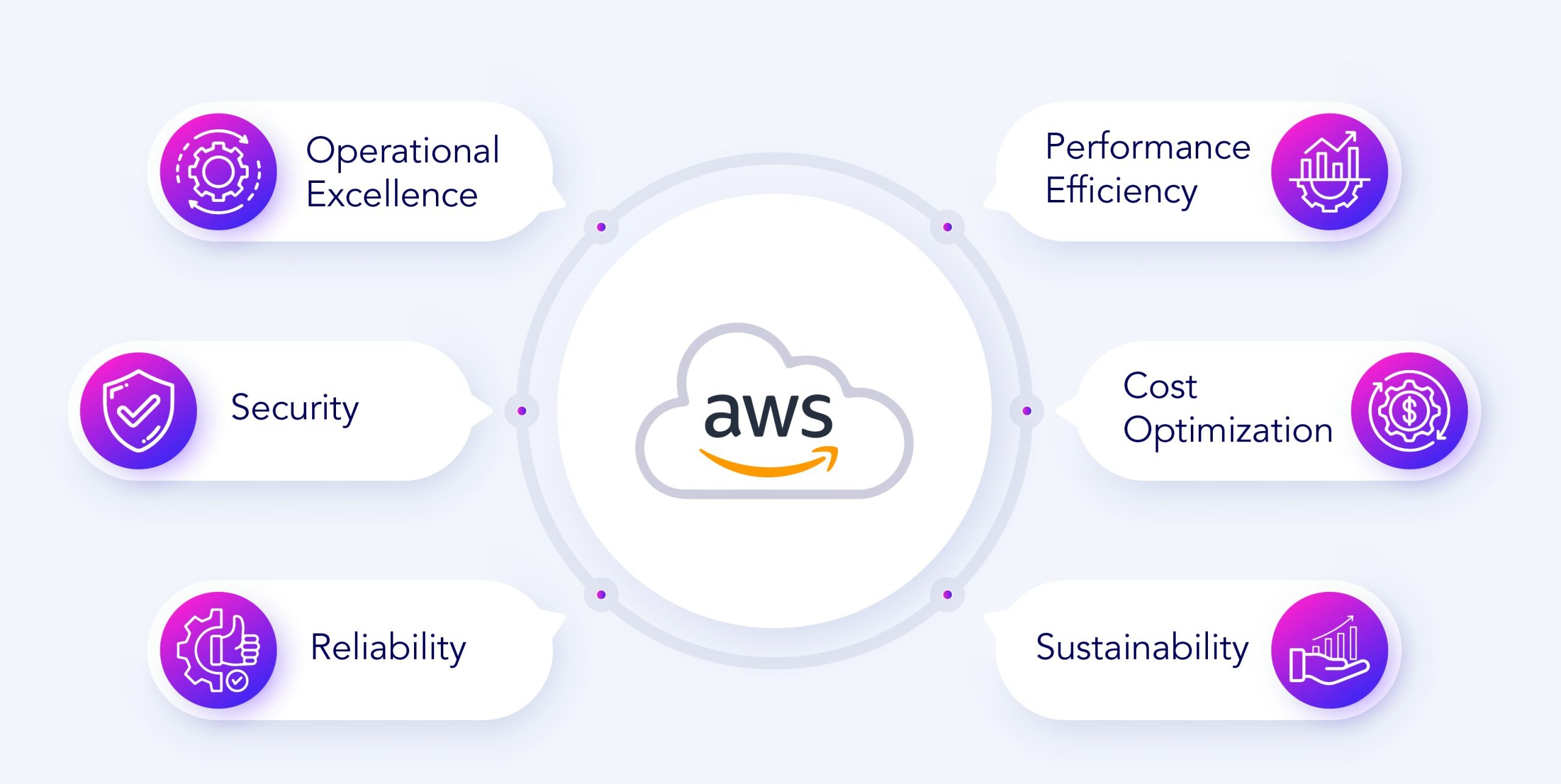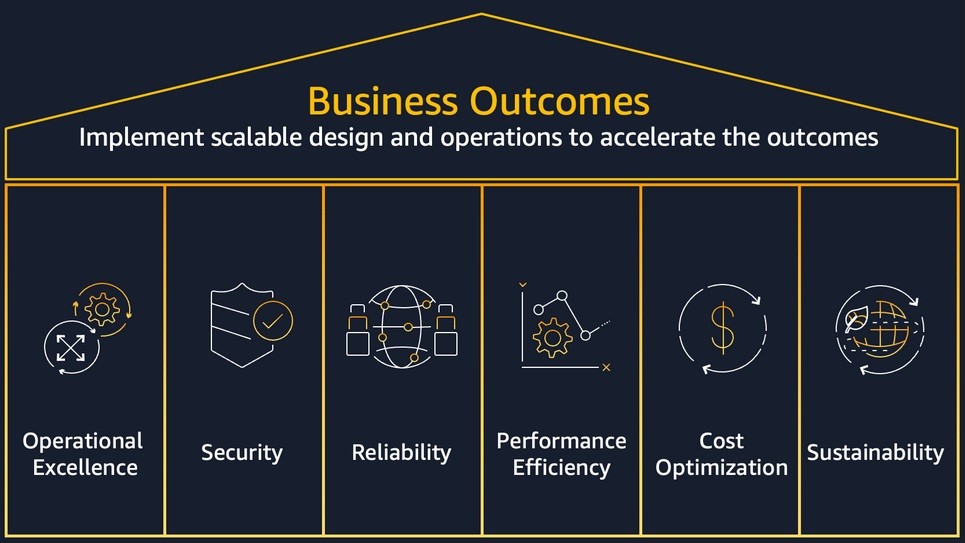The Importance of Regular Well-Architected Framework Assessments

Table of Contents
In today's digital-first world, cloud architecture isn't something you design once and forget. With business demands evolving rapidly and cloud services changing constantly, your architecture must be adaptable, secure, performant, and cost-efficient. That's where the Cloud Well-Architected Framework Review (WARF) comes in.
No matter if you're managing a bustling online retail site, developing machine learning algorithms, implementing generative AI, or facilitating DevSecOps workflows, the Well-Architected Review (WAR) serves as your guide to achieving lasting success in the cloud.
What is the Cloud Well-Architected Framework?
The Well-Architected Framework is a set of best practices and architectural guidelines designed to help cloud builders design, review, and continuously improve workloads on Cloud Platform (AWS/Azure/GCP etc.)
- Operational Excellence
- Security
- Reliability
- Performance Efficiency
- Cost Optimization
- Sustainability
The Importance of Regular Well-Architected Assessments
Cloud environments are dynamic. What worked six months ago might be inefficient or risky today. Performing regular WARs helps you:
- Adapt to new Cloud services and architectural patterns
- Ensure alignment with business and compliance goals
- Continuously optimize for performance, cost, and security
- Enable scalable growth without compromise
Framework Pillars Deep Dive
Let's explore the value of a Well-Architected Review through the lens of each framework pillar.
1. Operational Excellence Framework
Goal: Improve the ability to run and monitor systems to deliver business value.
Why It Matters:
- Ensures systems are observable, with actionable metrics and alerts
- Enables faster incident response and root cause analysis
- Promotes a culture of continuous improvement
WAFR Insights: A periodic review helps identify:
- Gaps in monitoring (e.g., missing CloudWatch alarms)
- Inefficient runbooks or playbooks
- Areas for automation, like deployment pipelines or patch management
Example: An e-commerce company used WAFR findings to automate rollback processes, reducing downtime during peak sales.
2. Security Framework
Goal: Protect data, systems, and assets while delivering business value.
Why It Matters:
- Cyber threats evolve constantly
- Compliance requirements (e.g., GDPR, HIPAA) are strict
- Zero-trust architecture is a moving target
WAFR Insights: Security assessments often reveal:
- Over-permissive IAM roles or outdated credentials
- Lack of encryption at rest/in transit
- Missing threat detection via GuardDuty or Security Hub
Example: A healthcare AI company prevented a potential data breach after a WAR uncovered misconfigured S3 bucket policies.
3. Reliability Framework
Goal: Ensure workloads perform intended functions and recover quickly from failure.
Why It Matters:
- Downtime = lost revenue and reputation
- Resiliency is key in mission-critical applications
WAFR Insights: Reliability gaps include:
- No defined recovery time objectives (RTO) or recovery point objectives (RPO)
- Lack of failover mechanisms or cross-region replication
- Unvalidated backup and restore processes
Example: A generative AI SaaS platform improved its RTO by 80% after refining its backup and multi-AZ deployment strategy during a WAFR.
4. Performance Efficiency Framework
Goal: Use computing resources efficiently to meet system requirements and maintain performance.
Why It Matters:
- Overprovisioning is expensive; underprovisioning causes latency
- ML and AI workloads require efficient scaling
WAFR Insights: Reviews often uncover:
- Underutilized EC2 instances or Lambda timeouts
- Outdated instance types when Graviton could save 20-40%
- Inefficient database indexing or storage choices
Example: A logistics firm running ML predictions cut inference time by 35% by switching to GPU-optimized instances and batch processing, guided by WAFR recommendations.
5. Cost Optimization Framework
Goal: Avoid unnecessary costs and maximize the return on cloud investments.
Why It Matters:
- Cloud sprawl is real
- You can optimize without sacrificing performance
WAFR Insights: Findings often include:
- Idle or orphaned resources (e.g., unattached EBS volumes)
- Lack of use of Savings Plans or Reserved Instances
- Unused premium-tier services
Example: A retail company saved over $25,000 annually by right-sizing VM workloads and implementing auto-scaling, both revealed through a WAFR.
6. Sustainability Framework
Goal: Minimize environmental impact of your cloud workloads.
Why It Matters:
- Corporate sustainability is now a competitive differentiator
- Cloud Service Providers (CSP) offers tools and architecture options to reduce carbon footprints
WAFR Insights: A review may uncover:
- Overuse of always-on infrastructure instead of serverless
- Opportunities to consolidate regions or workloads
- High carbon-intensive resources (e.g., underutilized GPU instances)
Example: An EdTech company migrated to AWS Graviton2 instances and Lambda functions, reducing its infrastructure carbon footprint by 60%.
Who Should Perform a WAFR or Infra Architecture Assessment
Various stakeholders should be involved in Well-Architected Framework Reviews:
- Cloud Architects evaluating current workloads
- Security & Compliance Teams ensuring governance
- DevOps/DevSecOps Teams refining CI/CD practices
- Business Stakeholders planning scaling and cost-efficiency
When Should You Perform a Well-Architected Review
Timing is crucial for effective Well-Architected Reviews:
- Before launching a new feature or product
- After a security event or system outage
- Quarterly or bi-annually as part of a governance plan
- Post-migration to Cloud Platform or major architectural overhaul
Long-Term Benefits of Well-Architected Reviews
Regular Well-Architected Reviews provide numerous long-term advantages:
- Proactive risk management instead of reactive troubleshooting
- Continuous alignment with Cloud Platform best practices
- Improved time-to-market with faster, stable deployments
- Better ROI on cloud spend through optimization
- Boosted customer trust with enhanced security and availability

Buisness Outcomes of Well-Architected Framework
Summary: Make WAR a Habit, Not a One-Time Task
As companies adopt cloud-native architectures, the Well-Architected Framework is crucial for maintaining competitiveness and resilience. Regularly conducting a Well-Architected Review guarantees that your workloads adapt securely, efficiently, and sustainably alongside your organization.
No matter if you're developing a worldwide e-commerce platform, training extensive language models, or integrating DevSecOps into your workflows - a WAR assists you in creating superior solutions in the cloud.
About the Author
Arbind is a leading researcher in technology and innovation. With extensive experience in cloud architecture, AI integration, and modern development practices, our team continues to push the boundaries of what's possible in technology.